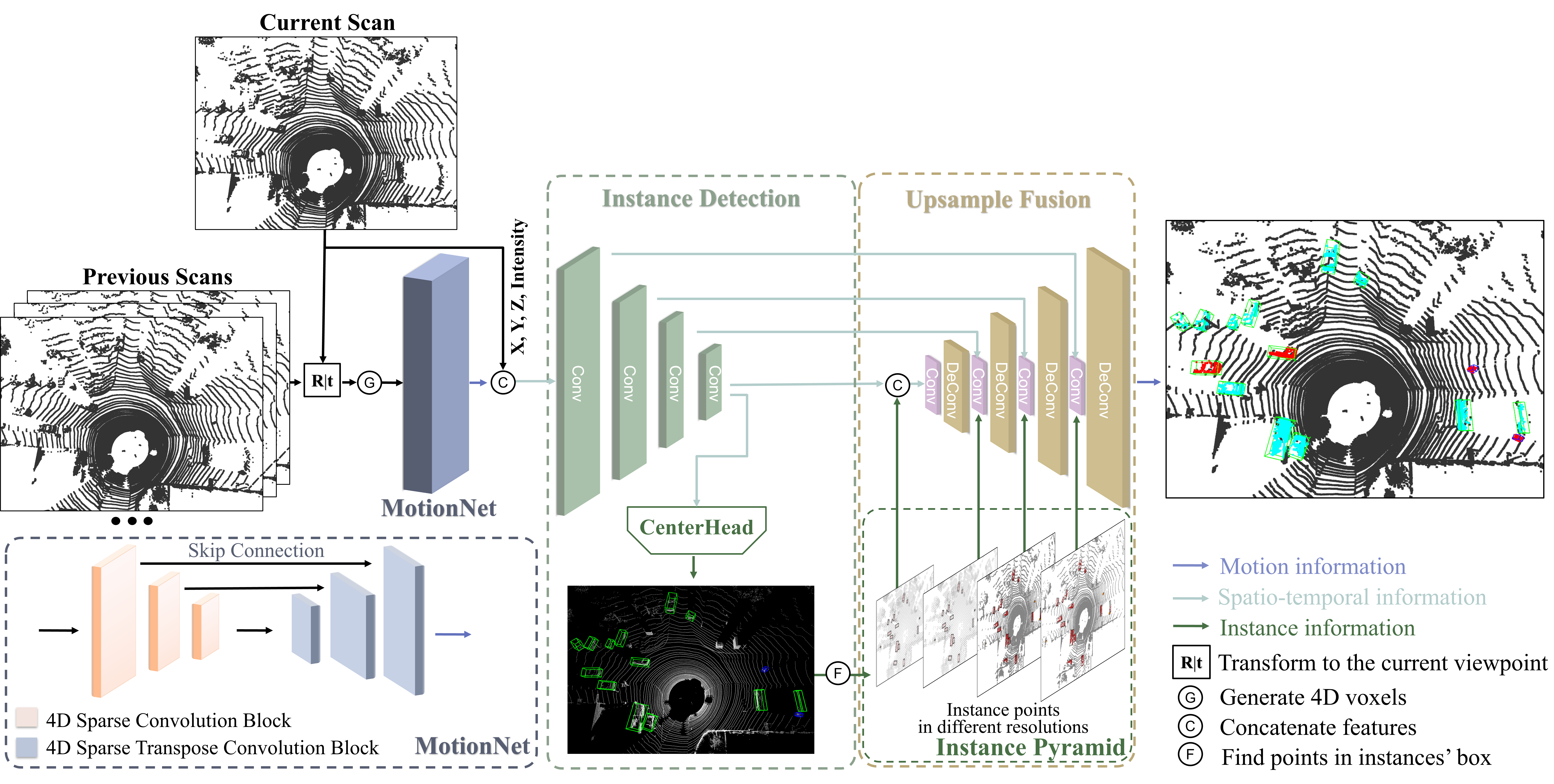Abstract
Identifying moving objects is a crucial capability for autonomous navigation, consistent map generation, and future trajectory prediction of objects. In this paper, we propose
a novel network that addresses the challenge of segmenting moving objects in 3D LiDAR scans. Our approach not only predicts point-wise moving labels but also detects instance information of main traffic participants.
Such a design helps determine which instances are actually moving and which ones are temporarily static in the current scene. Our method exploits a sequence of point clouds as input and quantifies them into 4D voxels.
We use 4D sparse convolutions to extract motion features from the 4D voxels and inject them into the current scan.
Then, we extract spatio-temporal features from the current scan for instance detection and feature fusion.
Finally, we design an upsample fusion module to output point-wise labels by fusing the spatio-temporal features and predicted instance information.
We evaluated our approach on the LiDAR-MOS benchmark based on SemanticKITTI and achieved better moving object segmentation performance compared to state-of-theart methods, demonstrating the effectiveness of our approach in
integrating instance information for moving object segmentation. Furthermore, our method shows superior performance on
the Apollo dataset with a pre-trained model on SemanticKITTI, indicating that our method generalizes well in different scenes.





